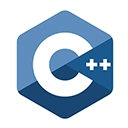C++ plays a pivotal role in the healthcare industry, particularly in the development of medical devices. Its combination of high performance, low-level control, and safety features makes it an ideal choice for creating devices that help diagnose, treat, and monitor patients. In this guide, we'll introduce you to the use of C++ in healthcare and provide a sample code example for a simple medical device application.
1. C++ in Healthcare
C++ is preferred in healthcare for several reasons:
- Performance: C++ provides the performance needed for real-time data processing and control in medical devices.
- Low-Level Control: It enables precise control of hardware components, sensors, and actuators in medical devices.
- Safety and Regulation: C++ is used in safety-critical medical devices and must adhere to strict regulatory standards, such as ISO 13485 and FDA guidelines.
2. Sample Code: Medical Device Application in C++
Let's provide a simplified code example for a medical device application. In practice, medical device software is highly complex, undergoes rigorous testing, and adheres to stringent regulatory standards. Here's a basic pseudocode representation:
#include <iostream>
#include <patient_monitor_library> // Example library for patient monitoring
int main() {
// Initialize the patient monitor
PatientMonitor monitor;
// Connect to sensors and start monitoring
monitor.connectSensors();
monitor.startMonitoring();
// Continuously monitor patient data
while (monitor.isMonitoring()) {
PatientData data = monitor.getPatientData();
// Process and display patient data
std::cout << "Heart Rate: " << data.heartRate << " BPM" << std::endl;
std::cout << "Blood Pressure: " << data.bloodPressure << " mmHg" << std::endl;
// Check for critical conditions and trigger alarms
if (data.heartRate > 120 || data.bloodPressure < 90) {
monitor.triggerAlarm();
}
}
// Stop monitoring and disconnect sensors
monitor.stopMonitoring();
monitor.disconnectSensors();
return 0;
}
3. Conclusion
C++ programming is essential in healthcare for developing medical devices that improve patient care and safety. The provided example is a simplified representation of a medical device application. In reality, medical device software development involves rigorous testing, strict regulatory compliance, and a focus on patient safety.

